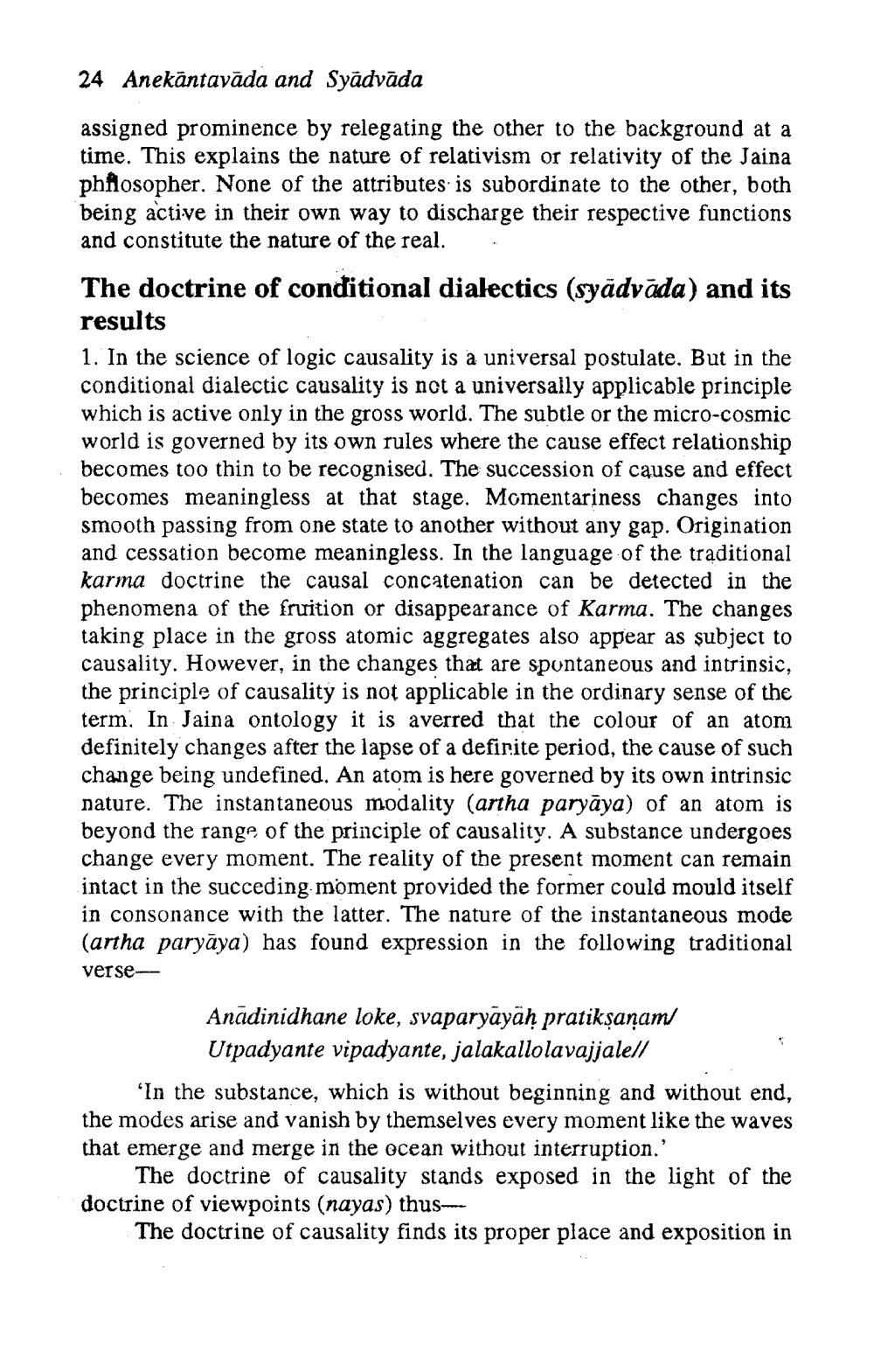________________
24 Anekāntavāda and Syädvāda
assigned prominence by relegating the other to the background at a time. This explains the nature of relativism or relativity of the Jaina philosopher. None of the attributes is subordinate to the other, both being active in their own way to discharge their respective functions and constitute the nature of the real.
The doctrine of conditional dialectics (syādvāda) and its results 1. In the science of logic causality is a universal postulate. But in the conditional dialectic causality is not a universally applicable principle which is active only in the gross world. The subtle or the micro-cosmic world is governed by its own rules where the cause effect relationship becomes too thin to be recognised. The succession of cause and effect becomes meaningless at that stage. Momentariness changes into smooth passing from one state to another without any gap. Origination and cessation become meaningless. In the language of the traditional karma doctrine the causal concatenation can be detected in the phenomena of the fruition or disappearance of Karma. The changes taking place in the gross atomic aggregates also appear as subject to causality. However, in the changes that are spontaneous and intrinsic, the principle of causality is not applicable in the ordinary sense of the term. In Jaina ontology it is averred that the colour of an atom definitely changes after the lapse of a definite period, the cause of such change being undefined. An atom is here governed by its own intrinsic nature. The instantaneous modality (artha paryāya) of an atom is beyond the range of the principle of causality. A substance undergoes change every moment. The reality of the present moment can remain intact in the succeding moment provided the former could mould itself in consonance with the latter. The nature of the instantaneous mode (artha paryāya) has found expression in the following traditional verse
Anādinidhane loke, svaparyāyāḥ pratikșanam/
Utpadyante vipadyante, jalakallolavajjalell 'In the substance, which is without beginning and without end, the modes arise and vanish by themselves every moment like the waves that emerge and merge in the ocean without interruption.'
The doctrine of causality stands exposed in the light of the doctrine of viewpoints (nayas) thus---
The doctrine of causality finds its proper place and exposition in




